This article was co-authored by Tara Coleman. Tara Coleman is a Clinical Nutritionist who has a private practice in San Diego, California. With over 15 years of experience, Tara specializes in sports nutrition, body confidence, and immune system health and offers personalized nutrition, corporate wellness, and online learning courses. She received a BS in Biology from James Madison University and spent six years in the pharmaceutical industry as an analytical chemist before founding her practice. Tara has been featured on NBC, CBS, Fox, ESPN, and Dr. Oz The Good Life as well as in Forbes, Cosmopolitan, Self, and Runner’s World.
There are 15 references cited in this article, which can be found at the bottom of the page.
wikiHow marks an article as reader-approved once it receives enough positive feedback. This article has 16 testimonials from our readers, earning it our reader-approved status.
This article has been viewed 1,352,408 times.
Can’t stop thinking about sweets? Feel you have a sugar addiction? Current research shows sugar impacts the chemicals in the brain to create cravings. These cravings are often stronger the impact of other items such as fat. One of those reasons is that sugar releases the feel-good chemicals in the brain, including serotonin and endorphins. These chemicals provide a short burst of energy and often improves mood. Triggers for sweet craving vary by individual but are often linked to the mood and energy boost associated eating sweets.[1] However, there are some ways to help combat these cravings.
Steps
Common Triggers
-
1Watch for emotional triggers. Sweet cravings are triggered because you are hungry. Often these cravings are emotionally triggered.[2] Think about the last time you started craving sweets. What were you feeling? Maybe bored, stressed, lonely, celebratory, or worried?[3] It is helpful to understand any emotional triggers in order to create the best plan to address those sweet cravings.
- To find your emotional triggers, track when you crave sweets. Every time you crave or eat a sweet, write down what you are feeling at that time in a journal. Make sure you pinpoint each emotion you are feeling.
- For example, you crave a sweet right after you get a bad grade on an exam. Your sweet cravings may be the result of sadness or disappointment.
-
2Notice stress cravings. Sweet cravings can also be induced by stress. Stress releases a chemical called cortisol, which is the stress hormone. Cortisol is linked with a laundry list of negative impacts on the body from weight gain to lowering the immune system. Stress is part of our fight or flight response. The way that you often deal with stress is to eat sweets since it calms this response.[4]
- If you are feeling stressed, try to avoid eating sweets. Find another outlet, such as working out or deep breathing.
Advertisement -
3Recognize when you need a burst of energy. When you are tired, you seek a quick and easy energy boost. Sugar provides a temporary boost, but it doesn't last long. Part the side effects of sugar is your energy will actually be lower afterward because it isn't a sustainable energy boost. Sugar is one of the fastest substances your body can turn into fuel or energy.
- However, the problem remains that it is just a quick and short boost of energy, often leading to a feeling down after the boost is over.
-
4Notice hormonal cravings. For women, sweet cravings can be triggered by premenstrual syndrome, due to a decrease in endorphin production. Eating sugar increases the feel-good chemicals in the brain. Another positive side effect of eating sugar includes a release of the chemical in the body that acts as a pain reliever.
- Any hormonal issues can create cravings since hormones are an integral part of the processing of energy in the body. If you have or think you have a hormonal imbalance or deficiency, seek professional medical care.
Nutrition and Dietary Changes
-
1Eat a real meal. If you are craving something sweet, check to see if you are just hungry.[5] Eating a healthy meal can decrease a sweet craving triggered by low energy.[6] When choosing food for your meal. pick healthy foods that will provide energy, such as protein, fiber, and complex carbohydrates.
- Increase protein in your meals, such as fish, chicken, lean red meats, and nuts.
- Avoid packaged meals that are full of sugar and bad ingredients such as salt.
-
2Consume more fiber.[7] Fiber helps you to maintain healthy sugar levels in the body, which will reduce the sugar drop that leads to your cravings. It will also help you feel full for longer amounts of time. Look for foods with larger amounts of fiber, which help fill you up.
-
3Have small meals. When sweet cravings are triggered with lower energy throughout the day, another strategy is to spread out meals throughout the day. This will help you avoid the energy decline that comes from periods of not eating.
- Some research suggests five to six smaller meals versus three big meals help maintain a full feeling thought-out the day. Try to increase the healthy amount of calories you intake per day when adding more meals, but don't eat five to six normal sized meals. This will increase your caloric intake by a large amount.[11]
-
4Read labels. Sugar is hidden in most processed foods. If you cannot read the ingredients or there are a lot of them, it is probably high in sugar. Other common names for types of sugar are agave syrup, brown sugar, corn sweetener, corn syrup, dextrose, fructose, glucose, lactose, maltose, sucrose, high-fructose corn syrup, fruit juice concentrate, honey, invert sugar, malt sugar, molasses, raw sugar, sugar, and syrup.[12]
-
5Choose better sweets. Sweets do not have to be complicated, super fancy, or a huge dessert. It might be best to choose a simple sweet that isn't full of processed, unnatural ingredients. Eating simple sweets also means avoiding processed foods which are often higher in sugar.[13] Try other options such as fruits and dark chocolate.
- Avoid candy, cakes, cookies, and ice cream.[14]
-
6Drink more water. One of the easiest ways to cut sweets out and decrease your cravings is to drink more water. This will help you avoid sugary beverages as well as keep you hydrated and healthier.[15] Avoid drinks with high sugar such as sports drinks, soft drinks, and some fruit drinks.[16]
- If you don't like plain water, try all naturally flavored seltzer water.
-
7Skip the artificial sweeteners. Artificial sweeteners are not a solution to avoiding or decreasing sugar cravings. There is also mixed research around the impact of artificial sweeteners and the increased risk of cancer. Artificial sweeteners include saccharin, aspartame, acesulfame potassium, sucralose, cyclamate sodium, and neotame.[17]
- Find a healthier sweetener such as stevia extract. It has no calories and is naturally derived, which means it comes from the stevia plant instead of from chemicals like artificial sweeteners. Stevia has also demonstrated effectiveness in treating high blood pressure and intestinal discomfort. However, stevia has been known to interact with some medications, such as anti-inflammatory and anti-fungal medications. Ask your doctor if stevia is safe if you take any of these medications.[18]
Behavioral Changes
-
1Practice mindful eating. Practice mindfulness while eating. Mindfulness is not a diet but a way to be present while eating, break bad habits and bring awareness to habits around eating. Mindfulness encourages you to know when we are truly full and pay attention to your body’s signals that you are full. The benefit of mindfulness eating is decreases over eating meals as well as desserts.[19] [20]
- To help with mindfulness, try something new. Often we eat the same breakfast, lunch, and dinner on a regular basis. Try to switch it up with new recipes or vegetables and meats you don't normally eat.
- Pay attention to each bite. This includes looking at your food, enjoying the look, savory each bite, and spending a moment after to enjoy the experience. Turn off the TV and avoid other distractions so you can enjoy each bite.[21]
-
2Take a break before dessert. Your brain needs time to register it is full after a meal. It takes time for the brain to retrieve signals from the digestive hormones.[22] It differs from person to person, but it is recommended to wait 20 to 30 minutes before eating dessert.
-
3Find an alternative activity. If you find that you are craving sweets, try an alternative activity that alleviates your emotional triggers or helps provide that break between a meal and something sweet.[23] If you are bored and you want to grab that bag of candy just to fill the time, try one of these other activities:
- Take a walk
- Try mediation
- Write in a journal
- Chew sugar-free gum
-
4Limit access. Another strategy for avoiding sweets is to limit access to temptation. This could be removing it completely or putting it out of sight. Research shows that removing items or at least making it harder to access them decreases consumption. It provides more time to think about if you really, really need or want the sweet. You can try:
- Throwing away all sweets and sugar in your house.
- Hide sweet items on the top shelf making it harder to reach.
- Place healthier items in sight, such bowl of fruit on the counter instead of a cookie jar.
Expert Q&A
Did you know you can get expert answers for this article?
Unlock expert answers by supporting wikiHow
-
QuestionHow can I break sugar cravings?
 Tara ColemanTara Coleman is a Clinical Nutritionist who has a private practice in San Diego, California. With over 15 years of experience, Tara specializes in sports nutrition, body confidence, and immune system health and offers personalized nutrition, corporate wellness, and online learning courses. She received a BS in Biology from James Madison University and spent six years in the pharmaceutical industry as an analytical chemist before founding her practice. Tara has been featured on NBC, CBS, Fox, ESPN, and Dr. Oz The Good Life as well as in Forbes, Cosmopolitan, Self, and Runner’s World.
Tara ColemanTara Coleman is a Clinical Nutritionist who has a private practice in San Diego, California. With over 15 years of experience, Tara specializes in sports nutrition, body confidence, and immune system health and offers personalized nutrition, corporate wellness, and online learning courses. She received a BS in Biology from James Madison University and spent six years in the pharmaceutical industry as an analytical chemist before founding her practice. Tara has been featured on NBC, CBS, Fox, ESPN, and Dr. Oz The Good Life as well as in Forbes, Cosmopolitan, Self, and Runner’s World.
Clinical Nutritionist
-
QuestionWhat can I have to stop sugar cravings?
 Tara ColemanTara Coleman is a Clinical Nutritionist who has a private practice in San Diego, California. With over 15 years of experience, Tara specializes in sports nutrition, body confidence, and immune system health and offers personalized nutrition, corporate wellness, and online learning courses. She received a BS in Biology from James Madison University and spent six years in the pharmaceutical industry as an analytical chemist before founding her practice. Tara has been featured on NBC, CBS, Fox, ESPN, and Dr. Oz The Good Life as well as in Forbes, Cosmopolitan, Self, and Runner’s World.
Tara ColemanTara Coleman is a Clinical Nutritionist who has a private practice in San Diego, California. With over 15 years of experience, Tara specializes in sports nutrition, body confidence, and immune system health and offers personalized nutrition, corporate wellness, and online learning courses. She received a BS in Biology from James Madison University and spent six years in the pharmaceutical industry as an analytical chemist before founding her practice. Tara has been featured on NBC, CBS, Fox, ESPN, and Dr. Oz The Good Life as well as in Forbes, Cosmopolitan, Self, and Runner’s World.
Clinical Nutritionist
-
QuestionWhat helps with food cravings?
 Claudia Carberry, RD, MSClaudia Carberry is a Registered Dietitian specializing in kidney transplants and counseling patients for weight loss at the University of Arkansas for Medical Sciences. She is a member of the Arkansas Academy of Nutrition and Dietetics. Claudia received her MS in Nutrition from the University of Tennessee Knoxville in 2010.
Claudia Carberry, RD, MSClaudia Carberry is a Registered Dietitian specializing in kidney transplants and counseling patients for weight loss at the University of Arkansas for Medical Sciences. She is a member of the Arkansas Academy of Nutrition and Dietetics. Claudia received her MS in Nutrition from the University of Tennessee Knoxville in 2010.
Master's Degree, Nutrition, University of Tennessee Knoxville Master's Degree, Nutrition, University of Tennessee KnoxvilleExpert Answer
Master's Degree, Nutrition, University of Tennessee KnoxvilleExpert Answer
References
- ↑ Stice, E., Burger, K.S., Yokum, S. (2013). The relative ability of fat and sugar tastes to activate reward, gustatory, and somatosensory regions.Am J Clin Nutr. 98(6): 1377-84
- ↑ Tiffany Stafford, CPT. Life Coach, Personal Trainer, & Holistic Nutritionist. Expert Interview. 26 March 2020.
- ↑ http://www.hsph.harvard.edu/nutritionsource/2015/01/13/3-strategies-to-prevent-overeating/
- ↑ https://www.psychologytoday.com/blog/the-athletes-way/201301/cortisol-why-the-stress-hormone-is-public-enemy-no-1
- ↑ Tara Coleman. Clinical Nutritionist. Expert Interview. 22 October 2020.
- ↑ http://authoritynutrition.com/3-step-plan-to-stop-sugar-cravings/
- ↑ Tara Coleman. Clinical Nutritionist. Expert Interview. 22 October 2020.
- ↑ http://www.mayoclinic.org/healthy-lifestyle/nutrition-and-healthy-eating/in-depth/high-fiber-foods/art-20050948
- ↑ Understanding Normal and Clinical Nutrition Hardcover 2011 by Sharon Rady Rolfes , Kathryn Pinna, and Ellie Whitney
- ↑ http://www.heart.org/HEARTORG/GettingHealthy/NutritionCenter/HealthyDietGoals/Frequently-Asked-Questions-About-Sugar_UCM_306725_Article.jsp
- ↑ http://www.washingtonpost.com/national/health-science/three-squares-vs-a-day-of-smaller-meals-which-is-better-for-healthy-weight-loss/2013/08/26/c926fc80-036e-11e3-a07f-49ddc7417125_story.html
- ↑ http://www.heart.org/HEARTORG/GettingHealthy/NutritionCenter/HealthyDietGoals/Frequently-Asked-Questions-About-Sugar_UCM_306725_Article.jsp
- ↑ http://www.hsph.harvard.edu/nutritionsource/2015/01/13/3-strategies-to-prevent-overeating/
- ↑ http://www.heart.org/HEARTORG/GettingHealthy/NutritionCenter/HealthyDietGoals/Frequently-Asked-Questions-About-Sugar_UCM_306725_Article.jsp
- ↑ Tiffany Stafford, CPT. Life Coach, Personal Trainer, & Holistic Nutritionist. Expert Interview. 26 March 2020.
- ↑ http://www.heart.org/HEARTORG/GettingHealthy/NutritionCenter/HealthyDietGoals/Frequently-Asked-Questions-About-Sugar_UCM_306725_Article.jsp
- ↑ http://www.cancer.gov/cancertopics/causes-prevention/risk/diet/artificial-sweeteners-fact-sheet
- ↑ http://www.livescience.com/39601-stevia-facts-safety.html
- ↑ http://www.hsph.harvard.edu/nutritionsource/2015/01/13/3-strategies-to-prevent-overeating/
- ↑ http://www.uhs.berkeley.edu/eda/7Mindful.pdf
- ↑ http://www.uhs.berkeley.edu/eda/7Mindful.pdf
- ↑ http://www.health.harvard.edu/blog/why-eating-slowly-may-help-you-feel-full-faster-20101019605
- ↑ http://www.hsph.harvard.edu/nutritionsource/2015/01/13/3-strategies-to-prevent-overeating/
- ↑ Tiffany Stafford, CPT. Life Coach, Personal Trainer, & Holistic Nutritionist. Expert Interview. 26 March 2020.
About This Article
To stop sweet cravings, eat a healthy sweet, like fruit or dark chocolate, to satisfy your cravings. You can also try chewing some sugar-free gum to distract yourself from the cravings rather than indulge them. Eating smaller, more frequent meals may keep you feeling fuller throughout the day and less likely to have cravings. You may also find you can stop cravings by keeping sweets out of sight or out of your home entirely, since making sweets harder to get can help you eat fewer of them. For information from our Social Worker reviewer on how to recognize and understand what may be triggering your sweet cravings, read on!


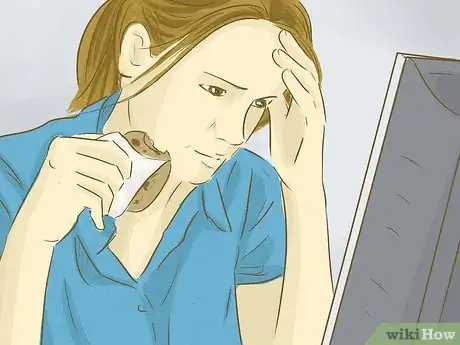


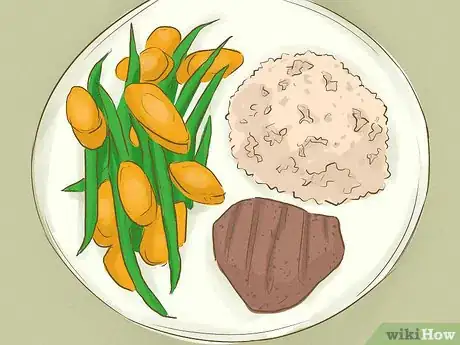








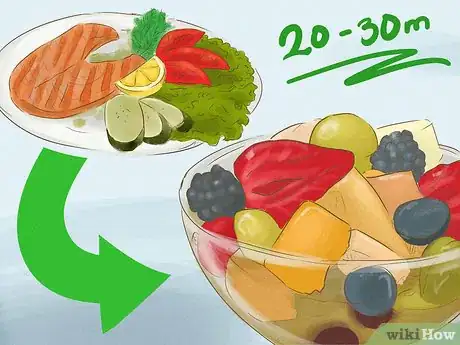


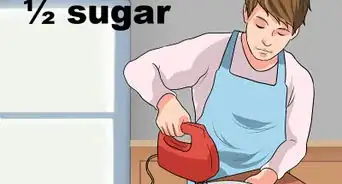

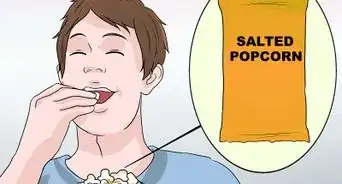


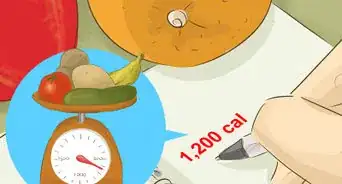
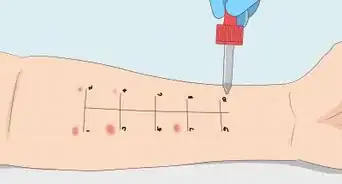
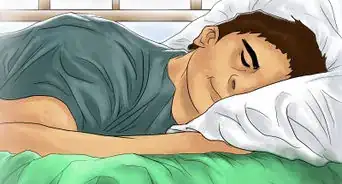








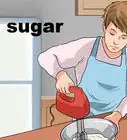

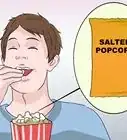




































Medical Disclaimer
The content of this article is not intended to be a substitute for professional medical advice, examination, diagnosis, or treatment. You should always contact your doctor or other qualified healthcare professional before starting, changing, or stopping any kind of health treatment.
Read More...